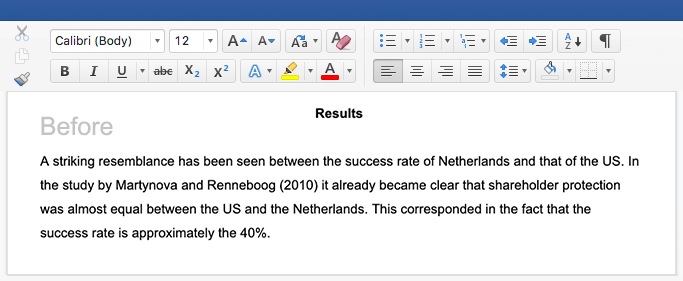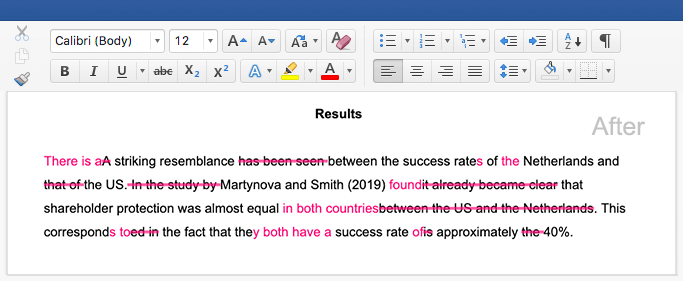Contractions (Grammar) | Definition & Examples
Contractions are words or phrases that have been shortened by omitting one or more letters. Typically, you can identify a contraction by the apostrophe that is used to indicate the place of the missing letters.
It’s getting dark.
They’re not coming for dinner.
Our flight is at 7 o’clock .
Contractions, which are sometimes called “short forms”, are commonly used in everyday speech and certain types of writing to save us time and space.
What is a contraction?
A contraction is a combination of two or more existing words that creates a shorter one. Sometimes, a contraction can be a single word (e.g., “kinda”), but in most cases contractions are formed using words that often go together (e.g., “do not” becomes “don’t”). Only specific words can be contracted, like personal pronouns (e.g., “I”, “you”, “they”), auxiliary verbs (e.g., “be”, “do”, “have”), and modal verbs (e.g., “can”, “must”, “will”)
The house wasn’t what I remembered it to be.
She’ll meet us at the park.
In general, we use contractions in speech and writing because they help us convey our thoughts in fewer words.
Scribbr’s free paraphrasing tool can help you to maintain a consistent tone in your writing and explore new ways to express your ideas.
How to use contractions
The rules for using contractions vary depending on the type of contraction.
- Positive contractions
- Negative contractions
- Nonstandard contractions
Positive contractions
A positive contraction is a verb construction that doesn’t end in “-n’t” (e.g., “he would join us” becomes “he’d join us”). Positive contractions can never appear at the end of a sentence.
- I think we’re almost there.
- We’re almost there.
- I think we’re.
Negative contractions
A negative contraction is a negative verb construction that ends in “-n’t” (e.g., “he would not join us” becomes “he wouldn’t join us”).
When forming a question with a negative contraction, the adverb “not” is moved to join the modal or auxiliary verb at the start of the sentence.
Didn’t he know? [contracted form]
Are they not coming? [uncontracted form]
Aren’t they coming? [contracted form]
Negative contractions can also be used in tag questions (i.e., short questions added to the end of a sentence to ask for confirmation from the listener). When a sentence has a negative tag question, the main part of the sentence is always affirmative.
You like cake, don’t you?
- Most negative contractions involve two words (e.g., “do not”). The single word “cannot” is an exception. This is contracted as “can’t”.
- “Will not” is contracted as “won’t”.
- The verb “may” does not have a negative contraction (“mayn’t” is not a real word).
- In question form, “am I not?” is contracted to the irregular “aren’t I?”.
Nonstandard contractions
Contractions can vary depending on region and dialect. For example, “y’all” (meaning “you all”) and “ain’t” (meaning “am/are/is not”) are common in some parts of the United States, while “amn’t” (meaning “aren’t”) is common in Scotland and Ireland.
However, these forms are considered nonstandard and are typically avoided in writing. Scribbr’s free grammar checker can help you catch mistakes like these and offer correct alternatives.
Tom ain’t a lawyer.
Amn’t I great?
Common mistakes with contractions
In English, there are numerous words that sound the same but have different spellings and meanings. For example, contractions are often confused with:
- Possessive pronouns
- Possessive nouns
Contractions and possessive pronouns
Possessive pronouns are often confused with contractions in writing because they sound exactly the same. However, contractions use apostrophes, while possessive pronouns do not.
Their and they’re
They’re is the contraction of “they are”, while their is the possessive form of “they”, meaning “belonging to them”.
They’re going on holiday.
Its and it’s
Its is the possessive form of “it”, meaning “belonging to it”, while it’s is the contraction of “it is” or “it has”.
The dog scratched its ear.
Whose and who’s
Whose is the possessive form of “who”, while who’s is a contraction of “who is” or “who has”.
Who’s cooking dinner tonight?
Your and you’re
Your is the possessive form of “you”, meaning “belonging to you”, while you’re is a contraction of “you are.”
You’re always late.
Contractions and possessive nouns
Possessive nouns are formed by adding an apostrophe and the letter “s” to a noun (e.g., “my neighbour’s house”). Because apostrophe s can also be used as a contraction (e.g., “she’s okay”), people sometimes confuse these forms. However, the context of the sentence can help determine whether it is a contraction or a possessive noun.
The car’s engine [the engine of the car] is making a funny noise.
The dog’s stressed [the dog is stressed] because of the fireworks.
The dog’s toy [the toy of the dog] is under the couch.
Common contractions list
Here’s a list of common contractions used in English:
| Contracted form | Uncontracted form |
| I’m | I am |
| I’d | I had, I would |
| I’ll | I will |
| I’ve | I have |
| you’re | you are |
| you’d | you had, would |
| you’ll | you will |
| you’ve | you have |
| he’s/she’s/it’s | he/she/it is |
| he’ll/she’ll/it’ll | he/she/it will (or shall) |
| he’d/she’d | he/she had (or would) |
| we’re | we are |
| we’ve | we have |
| we’d | we had (or would) |
| they’re | they are |
| they’ll | they will |
| they’ve | they have |
| they’d | they had (or would) |
| let’s | let us |
| that’s | that is |
| there’s | there is |
| what’ll | what will (or shall) |
| what’s | what is |
| what’ve | what have |
| who’re | who are |
Negative contractions list
Negative contractions include the word “not” and negate the verb.
| Contracted form | Uncontracted form |
| isn’t | is not |
| aren’t | are not |
| weren’t | were not |
| wasn’t | was not |
| don’t | do not |
| doesn’t | does not |
| can’t | cannot |
| couldn’t | could not |
| haven’t | have not |
| hadn’t | had not |
| won’t | will not |
| wouldn’t | would not |
| mustn’t | must not |
| shouldn’t | should not |
Worksheet: Contractions
You can practice your understanding of contractions with the following questions. Fill in the correct answer:
- (You’re/Your) ____ cooking is amazing!
- I (hadn’t/had’n’t) ____ seen them for a long time, and one day we ran into each other at the supermarket.
- I (do’t/don’t)__ know (who’s/whose) ____ idea this was, but it was a terrible one.
- (It’s/Its) ____ getting late.
- (He’s/His) ____ moving to Paris, even though he (does not) ____ speak a word of French.
- They (will not) ____ approve our budget.
- Your cooking is amazing!
- The possessive pronoun “your” is correct here, not “you’re” (which means “you are”).
- I hadn’t seen them for a long time, and one day we ran into each other at the supermarket.
- “Had not” is contracted as “hadn’t”. “Had’n’t” is not a real word.
- I don’t know whose idea this was, but it was a terrible one.
- “Do not” is contracted as “don’t”. “Do’t” is not a real word. The possessive pronoun “whose” is correct, not “who’s” (meaning “who is”).
- It’s getting late.
- “It’s” (meaning “it is”) is correct here.
- He’s moving to Paris, even though he doesn’t speak a word of French.
- “He’s” (meaning “he is”) is correct here. “Does not” is contracted as “doesn’t”.
- They won’t approve our budget.
- “Will not” is contracted as “won’t”.
Other interesting language articles
If you want to know more about commonly confused words, definitions, common mistakes, and differences between US and UK spellings, make sure to check out some of our other language articles with explanations, examples, and quizzes.
Frequently asked questions about contractions
Cite this Scribbr article
If you want to cite this source, you can copy and paste the citation or click the ‘Cite this Scribbr article’ button to automatically add the citation to our free Reference Generator.
Nikolopoulou, K. (2023, September 09). Contractions (Grammar) | Definition & Examples. Scribbr. Retrieved 15 December 2025, from https://www.scribbr.co.uk/english-language/contractions-in-grammar/



